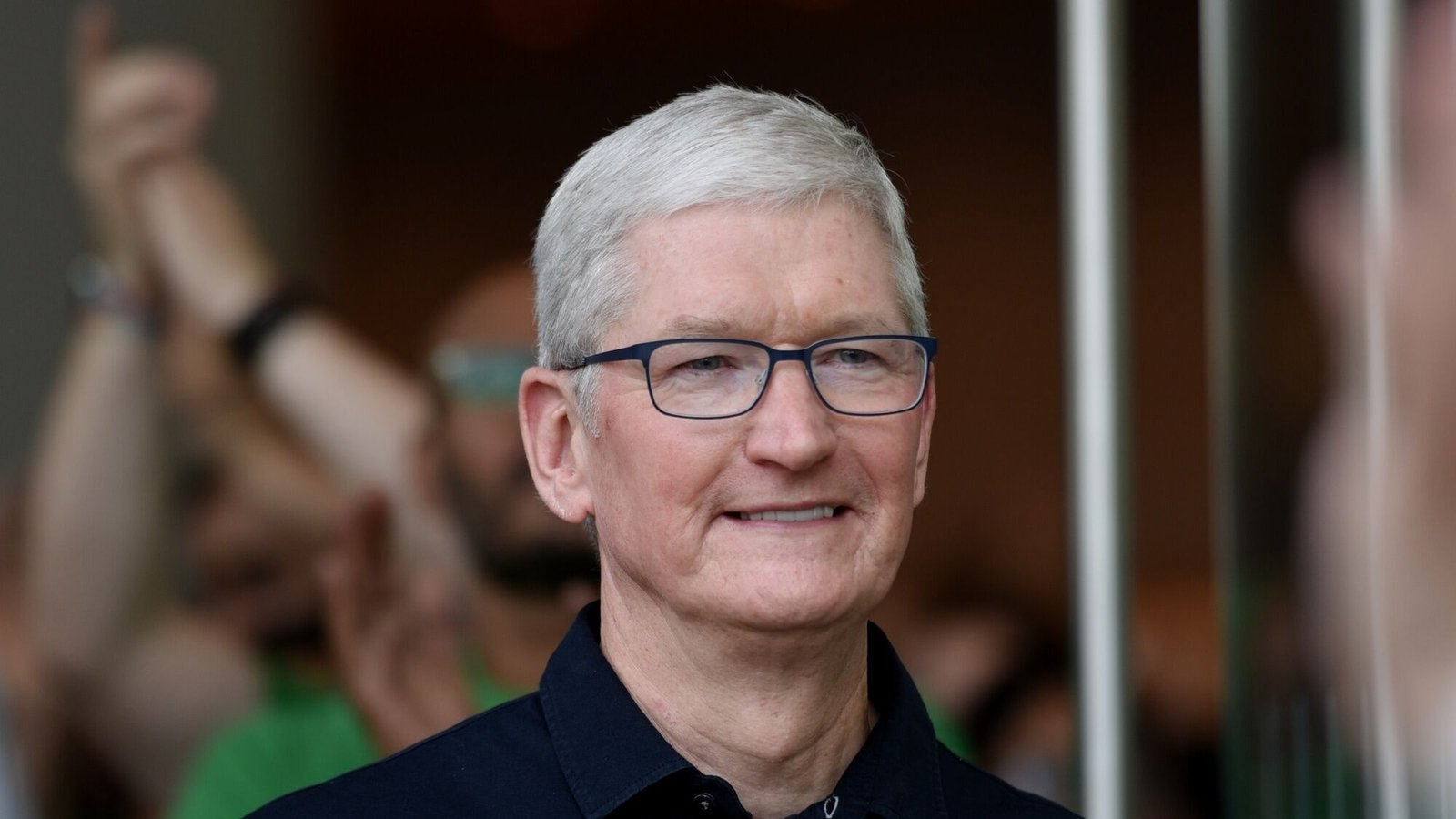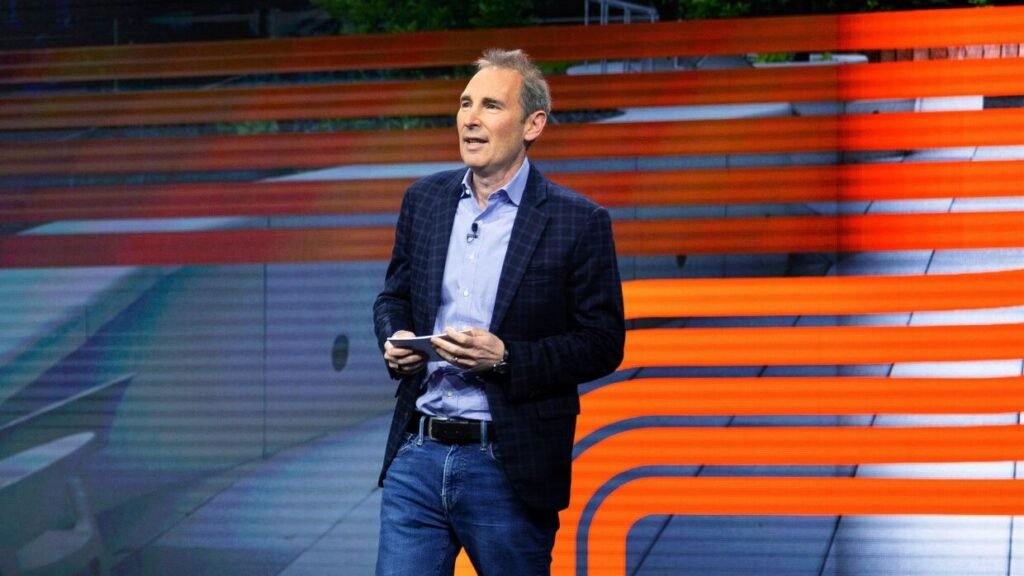Personality
Tim Cook’s Net Worth in 2025 Reveals the Massive Fortune Behind Apple’s Quiet Powerhouse
From engineer to empire builder, Apple’s CEO Tim Cook has quietly built a billion-dollar fortune while leading the world’s most valuable tech company.

Tim Cook, the CEO of Apple Inc., has built a financial empire that mirrors the company he leads—precise, consistent, and incredibly powerful. As of 2025, Tim Cook’s net worth is estimated to be over $1.9 billion, according to data from Bloomberg Billionaires Index and other financial outlets.

Cook took over the reins of Apple in 2011, following the passing of co-founder Steve Jobs. While many doubted whether the Alabama-born executive could fill such massive shoes, Cook didn’t just maintain Apple’s momentum—he scaled it to stratospheric heights. Under his leadership, Apple became the first publicly traded company to hit a $3 trillion market cap, a milestone it has now surpassed more than once.
Tim Cook doesn’t come from a coding or design background. He’s a supply chain genius who built his wealth not by launching startups or founding tech unicorns, but by turning Apple into a model of global efficiency, innovation, and shareholder success.
While Cook’s base salary is a relatively modest $3 million per year, the bulk of his wealth has come from stock awards and equity incentives. Over the years, Apple’s board has granted him sizable restricted stock units (RSUs), many of which were tied to performance metrics. With Apple consistently outperforming Wall Street expectations, those stock awards have matured into hundreds of millions of dollars in value.
In 2020, Cook officially became a billionaire, and since then, his net worth has steadily grown—thanks to Apple’s continued dominance in the smartphone, wearable, and services markets. As of 2025, his holdings in Apple stock alone account for over $1.5 billion of his total wealth, with additional assets including real estate and charitable foundations.

Tim Cook is known for his humility and philanthropic values. He has publicly stated that he plans to donate the majority of his wealth during his lifetime. In recent years, Cook has quietly contributed to causes focused on education, racial equity, environmental sustainability, and LGBTQ+ rights—causes that align with Apple’s public ethos.
Under Cook’s leadership, Apple has expanded beyond hardware, building a vast ecosystem of software and services, including Apple TV+, Fitness+, iCloud, and Apple Pay. And with artificial intelligence and mixed-reality platforms like Vision Pro on the rise, Cook’s long-game vision continues to position Apple at the cutting edge of consumer tech.
He may not command the social media spotlight like Elon Musk or Mark Zuckerberg, but Tim Cook’s influence is undeniable—and his fortune is just one reflection of that power. In the ever-changing tech world, he stands as a figure of balance, discipline, and relentless growth.
Personality
Who Is Andy Jassy and How He Rose Through the Ranks to Lead Amazon’s Global Empire
From an MBA graduate to the CEO of one of the world’s most powerful companies, Andy Jassy’s Amazon journey is a masterclass in strategic leadership.

Andy Jassy may not be a household name like Jeff Bezos, but in the world of tech and business, he’s a force to be reckoned with. As the current CEO of Amazon, Jassy is now at the helm of one of the world’s largest companies, overseeing a trillion-dollar empire that stretches from e-commerce and cloud computing to entertainment and artificial intelligence.

Born on January 13, 1968, in Scarsdale, New York, Andy Jassy had a classic East Coast upbringing. He earned his undergraduate degree from Harvard College and later returned to Harvard to complete his MBA at Harvard Business School. It was shortly after completing his MBA in the late 1990s that Jassy joined a relatively young and rapidly expanding company called Amazon.
Jassy officially joined Amazon in 1997, just three years after its founding. Initially hired as a marketing manager, he quickly demonstrated a unique blend of strategic thinking, product vision, and operational discipline. In those early days, he worked closely with Jeff Bezos, which laid the foundation for a long and trusted professional relationship.

But it was in 2003 that Jassy made his defining move—he pitched and then led the development of what would become Amazon Web Services (AWS). What started as an internal idea to simplify infrastructure for developers grew into one of the most profitable divisions in Amazon’s history. AWS revolutionized cloud computing, providing scalable, on-demand computing power to startups, enterprises, and even governments. Under Jassy’s leadership, AWS became a $90+ billion business, generating massive profits and fundamentally changing how businesses operate online.
Throughout the 2010s, while Jeff Bezos focused on expanding Amazon’s footprint into areas like grocery, smart devices, and media, Andy Jassy was quietly building the backbone of the internet. His visionary leadership earned him the trust of Amazon’s board and executive team, and in July 2021, he was officially named CEO of Amazon, succeeding Bezos.

As CEO, Jassy has faced enormous challenges—from pandemic-era supply chain disruptions to rising regulatory pressure and fierce competition in AI and cloud services. Yet he’s navigated it all with a steady hand, prioritizing innovation, operational efficiency, and long-term growth. Under his leadership, Amazon has doubled down on AI development, AWS expansion, retail innovation, and agentic robotics.
Andy Jassy is widely respected as a disciplined and visionary leader. His rise is not just a story of success—it’s a reflection of what’s possible within a company that nurtures bold ideas and strategic thinkers.
Today, Jassy oversees more than 1.5 million employees, and under his command, Amazon continues to push boundaries in tech, retail, and cloud computing. Whether you’re streaming Prime Video, using Alexa, or running a startup on AWS, you’re engaging with the empire Andy Jassy helped build—and now leads.
Tech
How Tim Cook Went From Alabama Classrooms to Becoming the Boss of Apple
From humble Southern roots to Silicon Valley’s top office, Tim Cook’s education and Apple entry reveal the power of quiet brilliance.

Tim Cook, the soft-spoken executive who now leads the most valuable tech company on Earth, didn’t start out as a Silicon Valley insider. His path to becoming the CEO of Apple Inc. is a testament to the power of education, discipline, and strategic thinking over decades—not overnight success.

Born in Mobile, Alabama, in 1960, Tim Cook was raised in the small town of Robertsdale. Unlike many of today’s tech CEOs, Cook wasn’t coding computers as a teenager or building startups in college. Instead, he was quietly excelling in school, driven by curiosity and a strong work ethic instilled by his working-class parents—his father was a shipyard worker and his mother worked at a pharmacy.
Cook’s academic journey began at Auburn University, where he earned a Bachelor of Science in Industrial Engineering in 1982. Auburn’s program, known for blending engineering with systems thinking and efficiency modeling, laid the foundation for his future role in managing Apple’s complex global operations. Cook then went on to earn his MBA from Duke University’s Fuqua School of Business in 1988, where he was a Fuqua Scholar, an honor awarded to students who graduate in the top 10% of their class.
So, how did Tim Cook end up at Apple? After stints at IBM, Intelligent Electronics, and Compaq, Cook had already built a reputation as a supply chain wizard. He joined Apple in 1998, a time when the company was on the verge of collapse, still reeling from years of internal mismanagement and falling market share. Many questioned why anyone would leave a stable career for a company that seemed destined to fail.

But Cook saw something others didn’t. In his own words, “Any purely rational consideration” would have led him to stay at Compaq. But “my intuition told me that joining Apple would be a once-in-a-lifetime opportunity to work for a creative genius.” That genius, of course, was Steve Jobs, who had recently returned to Apple.
Cook’s first role was Senior Vice President for Worldwide Operations, and he quickly made an impact. He slashed inventory levels, streamlined supply chains, and moved Apple’s manufacturing to contract facilities, a decision that drastically improved efficiency and cut costs. His quiet but strategic approach earned him more responsibility, eventually becoming Chief Operating Officer in 2005.
When Steve Jobs stepped down due to health issues, Tim Cook officially became CEO in August 2011. Since then, he’s taken Apple to unprecedented heights—guiding it through product launches like the Apple Watch, AirPods, and Vision Pro, and expanding into services, privacy-first platforms, and sustainability.
Today, Cook’s success is not just about leading a company; it’s about how he got there. His engineering discipline, elite business training, and operational mastery are what transformed Apple’s backend into a streamlined empire and helped grow its market value by trillions.
In a world that celebrates flash and charisma, Tim Cook’s story is about patience, preparation, and the power of staying the course.
-

 Sports1 week ago
Sports1 week agoBlue Jays Humiliated in Tampa as John Schneider’s Comments Raise Eyebrows
-

 Personality5 days ago
Personality5 days agoDonald Trump’s net worth reveals the fortune behind the former US President and business mogul
-

 Entertainment6 days ago
Entertainment6 days agoTop 5 Oscar Moments That Shook Hollywood and the World
-

 Entertainment5 days ago
Entertainment5 days agoJonathan Joss Shot Dead at 59 in Texas Tragedy His Husband Says Was Hate-Fueled Crime
-

 Tech1 week ago
Tech1 week agoTop 7 AI Tools Every Corporate Employee Should Use in 2025.
-

 Films5 days ago
Films5 days agoRobert Pattinson’s Top 5 Films That Showcase His Evolution from Teen Idol to Indie Icon
-

 Personality5 days ago
Personality5 days agoLionel Messi’s Net Worth Revealed and How the Football Legend Built His Multi-Million Dollar Fortune
-

 Films5 days ago
Films5 days agoJames Gunn’s Net Worth Revealed How the Filmmaker Built His Fortune
























Pingback: How Tim Cook Went From Alabama Classrooms to Becoming the Boss of Apple - Daily Global Diary